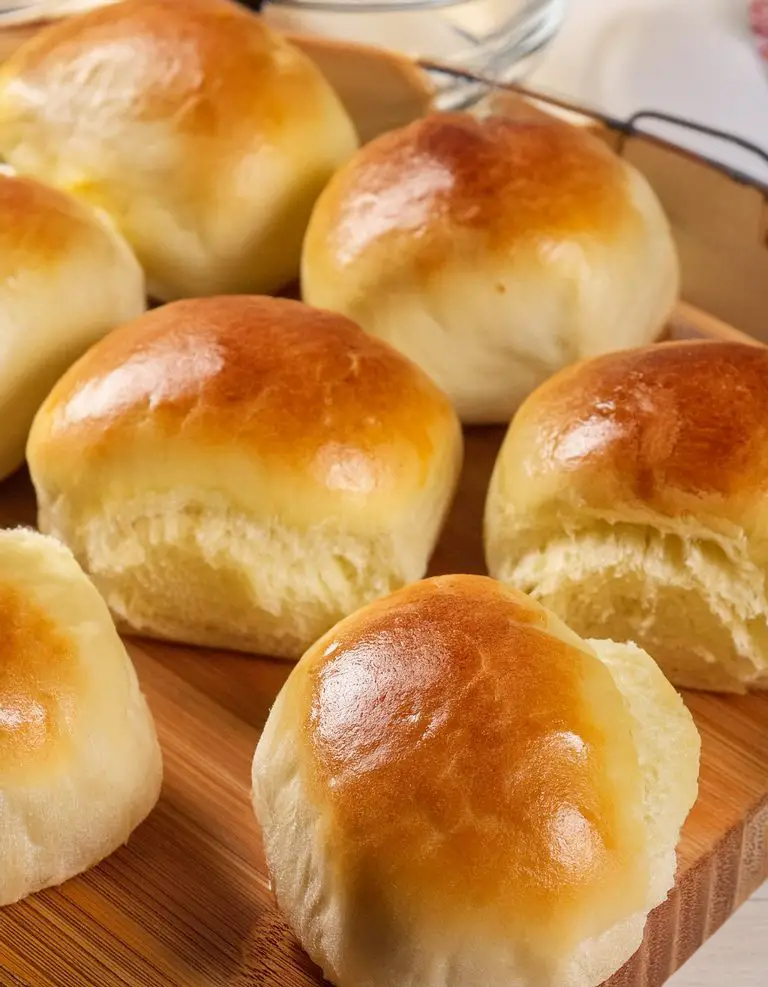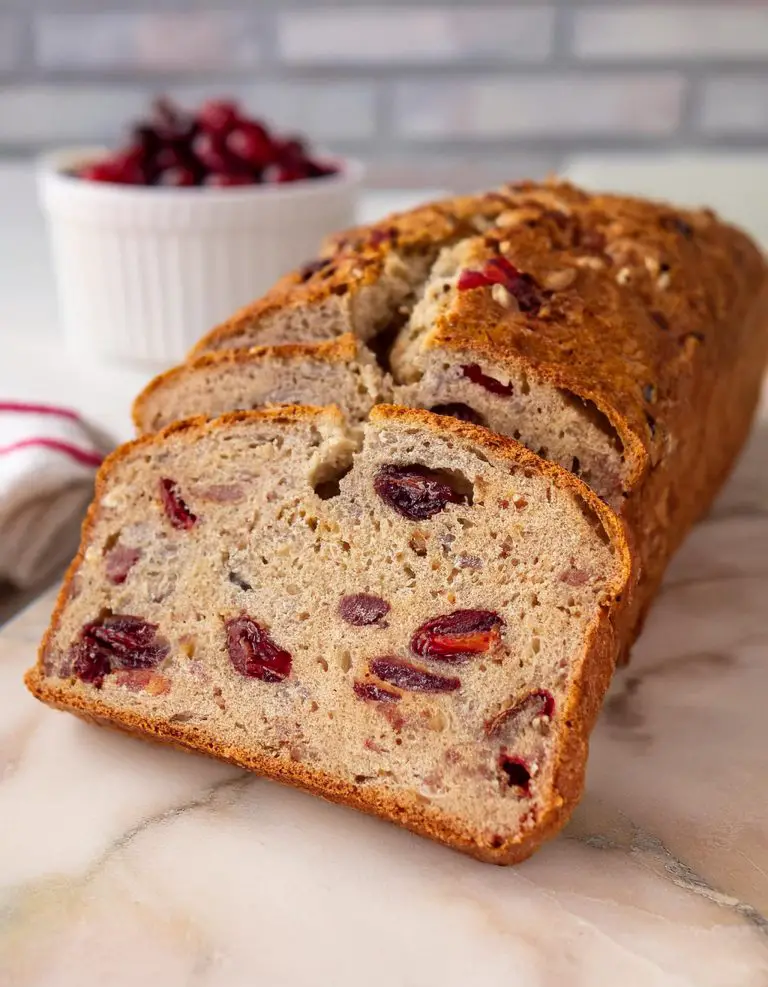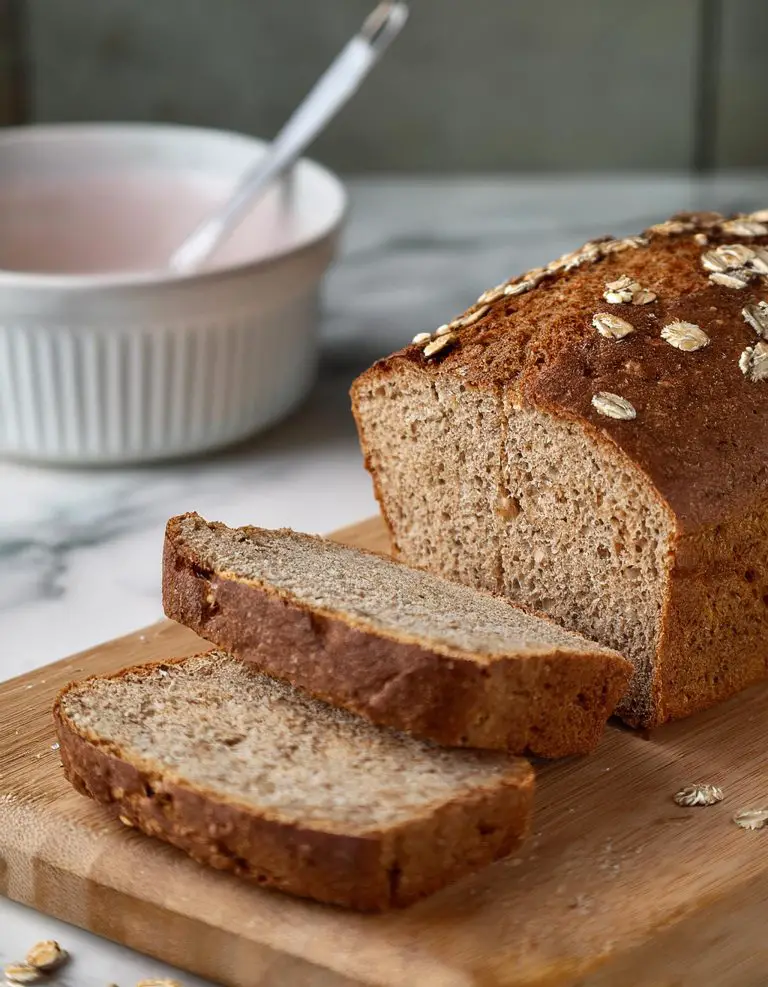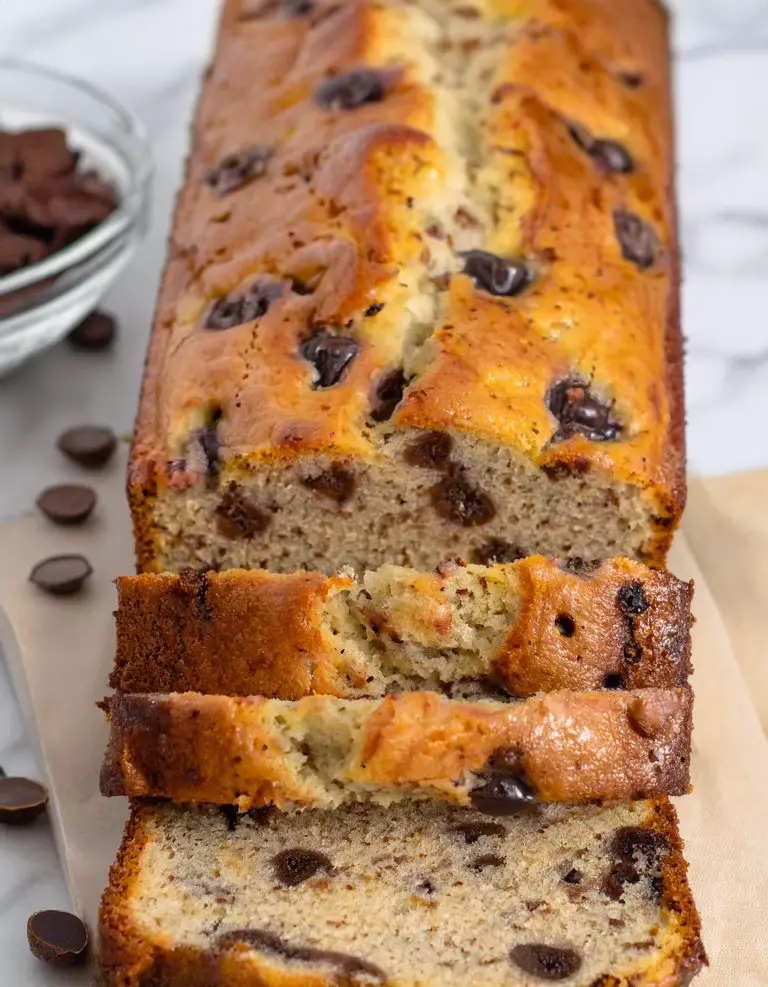White Bread
There’s something deeply satisfying about baking your own bread. The aroma of fresh bread wafting through the kitchen is a universally comforting smell, and the process of kneading dough can be almost therapeutic. Homemade white bread is not only delicious, but it also avoids the preservatives and chemicals often found in store-bought versions.

Whether you’re a seasoned baker or a novice, this simple white bread recipe will guide you through making a beautifully soft and fluffy loaf that’s perfect for sandwiches, toast, or simply slathered with butter.
Ingredients Needed for This Recipe
- 3 cups of all-purpose flour: This will form the base of your bread.
- 1 tablespoon of sugar: Sugar not only sweetens the bread but also helps the yeast activate.
- 1 teaspoon of salt: Salt is crucial for flavor.
- 1 packet (2 1/4 teaspoons) of instant yeast: Yeast is what makes the bread rise.
- 1 cup of warm water: Warm water helps to activate the yeast.
- 3 tablespoons of vegetable oil: Oil enriches the dough, giving it a softer texture.
Instructions for Making White Bread
- Mix the dry ingredients: In a large bowl, combine the flour, sugar, salt, and yeast. Stir these together until evenly mixed.
- Add the wet ingredients: Pour in the warm water and vegetable oil. Mix with a wooden spoon until a rough dough forms.
- Knead the dough: Turn the dough out onto a floured surface and knead for about 10 minutes, or until the dough is smooth and elastic. If the dough is too sticky, add a little more flour as you knead.
- Let the dough rise: Place the kneaded dough in a greased bowl, turning once to coat the dough in oil. Cover the bowl with a damp cloth and let it rise in a warm place until it doubles in size, about 1 to 1.5 hours.
- Shape and proof the dough: Once the dough has risen, punch it down and turn it out onto a floured surface. Shape it into a loaf and place it in a greased 9×5 inch loaf pan. Cover with a damp cloth and let it rise again until it puffs up about 1 inch above the rim of the pan, approximately 30 to 45 minutes.
- Bake the bread: Preheat your oven to 375°F (190°C). Once the dough has risen, place it in the oven and bake for about 25 to 30 minutes, or until the top is golden brown and the loaf sounds hollow when tapped on the bottom.
- Cool and serve: Remove the bread from the oven and let it cool in the pan for 10 minutes. Then, turn it out onto a wire rack to cool completely before slicing.
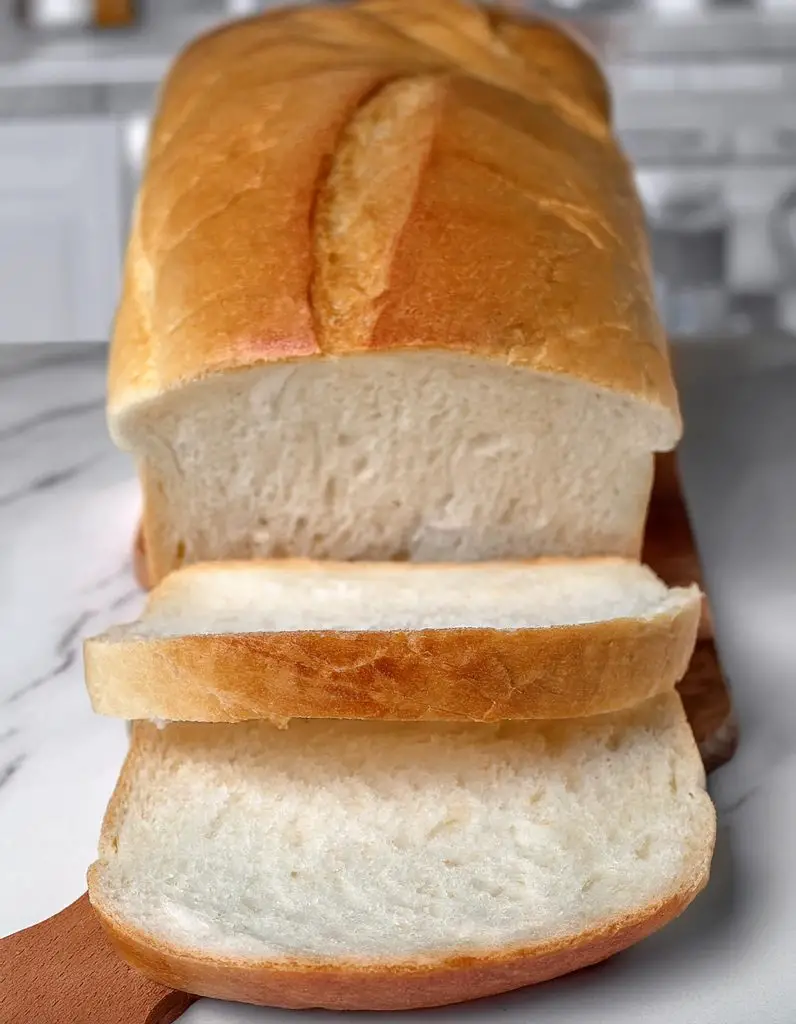
Tips for Perfecting the Recipe
Yeast Activation: Ensuring that your yeast is fresh and active is crucial for a good rise. If you’re unsure whether your yeast is still good, mix it with the warm water and a pinch of sugar. If it doesn’t bubble and foam within 10 minutes, it might be inactive, and you’ll need a new packet.
Water Temperature: The temperature of the water you use should be warm but not too hot, ideally between 105°F and 115°F. Water that’s too hot can kill the yeast, while water that’s too cold won’t activate it effectively.
Kneading: Kneading develops the gluten in the flour, giving your bread the right texture. It’s important not to under-knead or over-knead. The dough should feel smooth and elastic when it’s ready.
Proofing Environment: Yeast thrives in a warm, draft-free environment. If your kitchen is cold, you can let the dough rise in an oven that’s turned off but with the light on, or you can place the bowl of dough on top of a warm appliance.
Timing the Bake: Every oven is different, so it’s a good idea to check your bread a few minutes before the suggested baking time is up. If the top is browning too quickly, you can tent it with aluminum foil.
Testing for Doneness: You can use a digital thermometer to check if the bread is done. The internal temperature should reach about 190°F to 200°F.
Serving Suggestions
Breakfast: Toast slices of white bread and spread them with butter, jam, or cream cheese. For a savory option, top with avocado or a poached egg.
Sandwiches: White bread makes an excellent base for both cold and hot sandwiches. Try classic combinations like ham and cheese, or more gourmet options like roast beef with horseradish and arugula.
Soup and Salad: Serve a warm slice of white bread alongside your favorite soup or salad for a comforting meal.
Desserts: Bread pudding or French toast are great ways to use up any bread that’s starting to go stale.
Croutons: Cube the bread, toss it with olive oil and your favorite seasonings, and bake until crispy for homemade croutons.
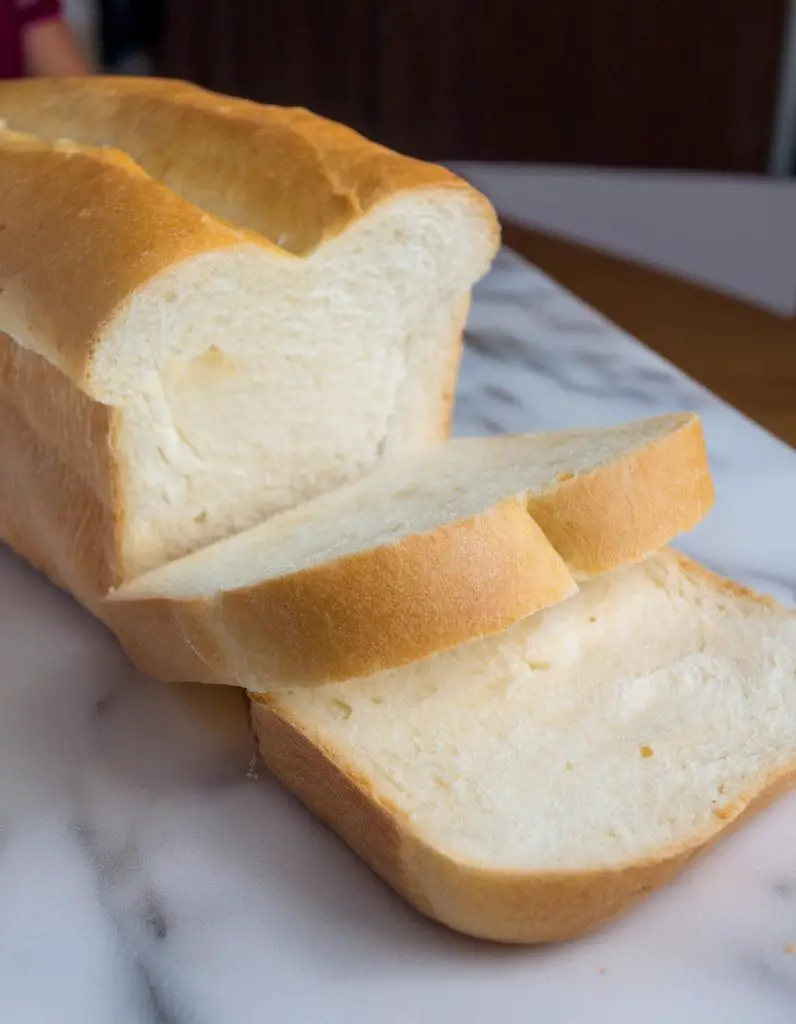
Storage Tips
Cool Completely: Before storing, let the bread cool completely on a wire rack to prevent condensation from making it soggy.
Plastic Bag or Bread Box: Store the cooled bread in a plastic bag or bread box at room temperature. It should last for about 3 to 4 days.
Refrigeration: While refrigerating bread can prevent mold, it also tends to dry out the bread. It’s better to keep bread at room temperature unless the climate is very humid.
Freezing: For longer storage, slice the bread and freeze it in airtight bags. You can toast slices straight from the freezer.
Frequently Asked Questions
Can I use bread flour instead of all-purpose flour? Yes, bread flour has more gluten than all-purpose flour and can be used for a chewier texture and higher rise.
Why did my bread turn out dense? This could be due to a variety of reasons such as not enough yeast, old yeast, insufficient kneading, or not allowing enough time to rise.
Can I add ingredients like seeds or nuts? Absolutely! Mix in seeds like sesame or sunflower, or nuts like walnuts for added texture and flavor. Add these in at the end of the kneading process.
What if I don’t have a loaf pan? No problem! You can form the dough into a round or oval shape and bake it on a baking sheet for a rustic loaf.
Is there a way to make this bread vegan? Yes, you can substitute the vegetable oil with another plant-based oil, and ensure your sugar is vegan (some sugars are processed with bone char).
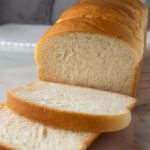
White Bread
Ingredients
- 3 cups of all-purpose flour: This will form the base of your bread.
- 1 tablespoon of sugar: Sugar not only sweetens the bread but also helps the yeast activate.
- 1 teaspoon of salt: Salt is crucial for flavor.
- 1 packet 2 1/4 teaspoons of instant yeast: Yeast is what makes the bread rise.
- 1 cup of warm water: Warm water helps to activate the yeast.
- 3 tablespoons of vegetable oil: Oil enriches the dough giving it a softer texture.
Instructions
- Mix the dry ingredients: In a large bowl, combine the flour, sugar, salt, and yeast. Stir these together until evenly mixed.
- Add the wet ingredients: Pour in the warm water and vegetable oil. Mix with a wooden spoon until a rough dough forms.
- Knead the dough: Turn the dough out onto a floured surface and knead for about 10 minutes, or until the dough is smooth and elastic. If the dough is too sticky, add a little more flour as you knead.
- Let the dough rise: Place the kneaded dough in a greased bowl, turning once to coat the dough in oil. Cover the bowl with a damp cloth and let it rise in a warm place until it doubles in size, about 1 to 1.5 hours.
- Shape and proof the dough: Once the dough has risen, punch it down and turn it out onto a floured surface. Shape it into a loaf and place it in a greased 9×5 inch loaf pan. Cover with a damp cloth and let it rise again until it puffs up about 1 inch above the rim of the pan, approximately 30 to 45 minutes.
- Bake the bread: Preheat your oven to 375°F (190°C). Once the dough has risen, place it in the oven and bake for about 25 to 30 minutes, or until the top is golden brown and the loaf sounds hollow when tapped on the bottom.
- Cool and serve: Remove the bread from the oven and let it cool in the pan for 10 minutes. Then, turn it out onto a wire rack to cool completely before slicing.

